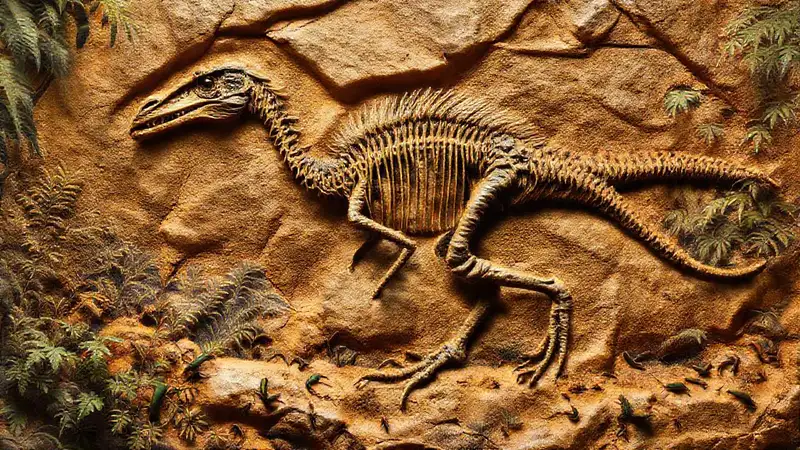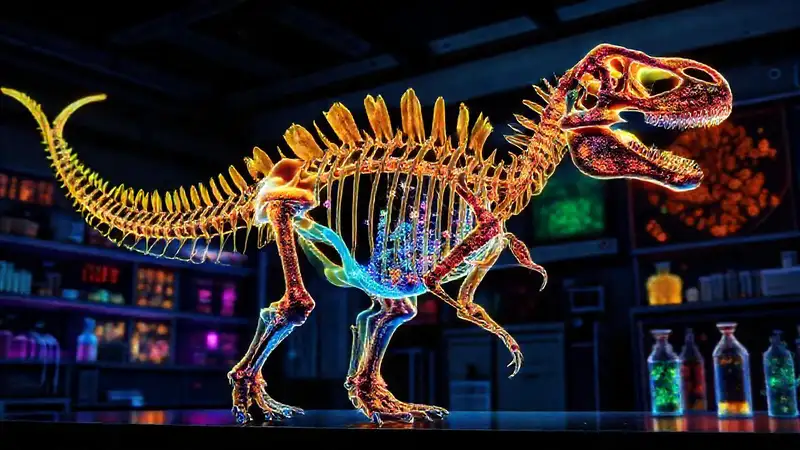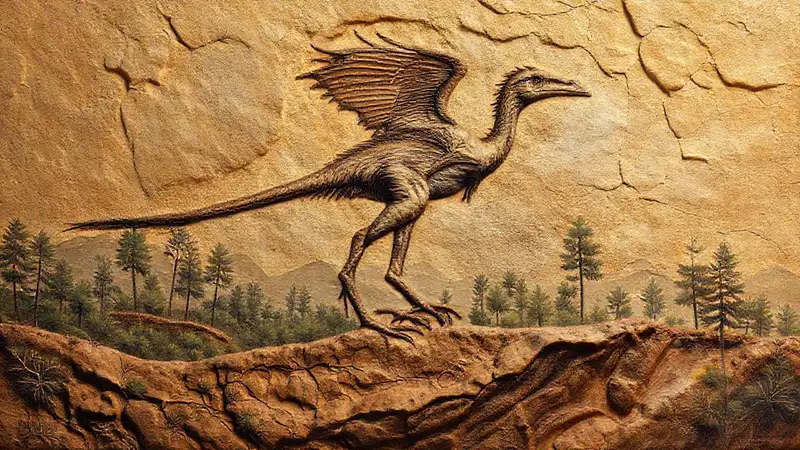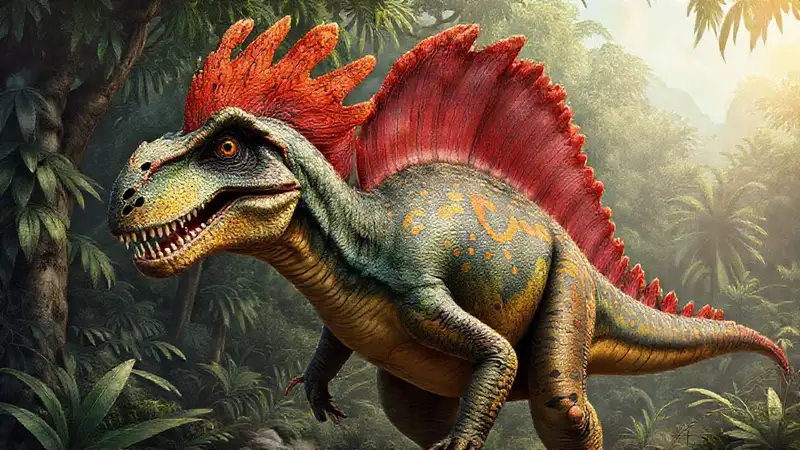Archaeopteryx is arguably one of the most fascinating fossils ever discovered, providing a crucial link between the Mesozoic Era’s reptilian and avian worlds. Unearthed in Bavaria, Germany, in the late 19th century, this remarkably preserved specimen displays a startling combination of characteristics—both reptilian and avian—making it a pivotal discovery for paleontologists. Its existence revolutionized our understanding of avian evolution, demonstrating a gradual transition, not a sudden appearance, of bird-like features from a reptilian ancestor. Studying this transitional fossil allows us to piece together the complex evolutionary history of birds, and especially, to try and understand their dietary habits during that pivotal period.
The fossil itself is incomplete, presenting significant challenges for researchers attempting to reconstruct its life. However, through meticulous analysis of its skeletal structure, plumage impressions, and comparisons with other extinct reptiles and early birds, scientists have developed compelling theories about its lifestyle and, crucially, what it likely consumed. While debates continue about the precise details, the overall consensus points to an insectivorous diet, supported by a convergence of anatomical evidence.
Skeletal Evidence for a Carnivorous Diet
The skeletal structure of Archaeopteryx reveals several key features that strongly suggest a carnivorous diet. Firstly, the sharp, serrated edges on the teeth – even though they’re small and rudimentary – indicate a propensity to grip and tear prey. These weren’t designed for chewing in the same way as modern birds; they were more for securing the meal. Secondly, the prehensile claws on its wings, particularly the larger outer digits, suggest an ability to grasp and hold onto branches or even small animals while hunting.
Furthermore, the robust wrist bones and wrist joint allow for a powerful and flexible grip, an adaptation frequently observed in predators that hunt by seizing and holding their prey. These anatomical features are not found in herbivores, which generally have weaker wrists and feet. The bone density analysis has also indicated a significant bone mass, suggesting a creature that was active and relatively strong, perfectly suited for a hunting lifestyle – not a gentle feeder. Ultimately, the combined anatomical evidence indicates a creature built for capturing and handling small animals.
Feather Analysis and Insect Hunting
Beyond the skeletal features, the fossilized feathers of Archaeopteryx provide further clues about its feeding habits. The presence of pennaceous feathers – the long, vaned feathers characteristic of modern birds – suggests that it was capable of flight, a crucial element for an aerial hunter. Microscopic examination of the feather structure reveals barbules with interlocking features, indicating they weren’t solely for insulation; they were designed for generating lift and maneuverability. This suggests an active and agile hunter.
More importantly, the type of feathers discovered is consistent with those found on modern birds that specialize in catching insects. The filaments and bristles, along with the pennaceous feathers, likely formed a dense, effective covering, providing a camouflage advantage while pursuing insects in the trees and undergrowth. The distribution of these feather types across the body – with denser plumage on the wings and tail – further supports the hypothesis of an insectivorous strategy focused on short, quick bursts of flight.
Comparisons with Modern Bird Feeders

Looking to modern birds for comparison helps solidify the theory that Archaeopteryx was an insectivore. Birds such as shrikes, flycatchers, and woodpeckers, which rely heavily on insect prey, share several similar anatomical traits with Archaeopteryx. Notably, their strong feet and claws for grasping branches and their sharp, pointed beaks are reminiscent of the fossil's features. Furthermore, these birds exhibit agile flight patterns, perfectly suited for pursuing insects in flight and on the ground.
Considering these parallels, it’s reasonable to conclude that Archaeopteryx adopted a similar hunting technique. It likely patrolled dense foliage, utilizing its feathers for both maneuverability and camouflage, and rapidly darting to capture unsuspecting insects. The hunting strategy would have been opportunistic, capitalizing on readily available food sources and demonstrating a high degree of adaptability. Examining these contemporary analogues provides valuable insight into the potential behavior of this ancient bird.
The Size of Prey – Scaling it Down
The size of the teeth and the overall body size of Archaeopteryx offer valuable insights into the scale of its prey. The relatively small size of the teeth (around 2 mm long) suggests it primarily targeted insects and other small invertebrates – spiders, larvae, and perhaps even small centipedes or millipedes. Based on estimations of its body length (around 40-50 cm), it wouldn't have been able to take down large vertebrates.
Moreover, the proportionate size of its eyes suggests acute vision, another key adaptation for an insect hunter. Birds that specialize in catching insects often possess highly developed visual acuity, enabling them to spot their prey from a distance. Therefore, it’s highly plausible that Archaeopteryx was a ‘sit-and-wait’ hunter, relying on its camouflage and keen eyesight to ambush its unsuspecting victims, rather than actively pursuing larger prey.
Conclusion
Archaeopteryx represents a truly remarkable evolutionary bridge, embodying a mosaic of reptilian and avian characteristics. The accumulation of evidence – skeletal structure, feather analysis, and comparisons with modern bird feeders – overwhelmingly supports the conclusion that this ancient bird was predominantly an insectivorous creature. Its specialized anatomy and hunting behaviors clearly demonstrate a lifestyle tailored to capturing and consuming small invertebrates, securing its position as a critical link in the evolutionary narrative of birds.
Despite the challenges of incomplete fossilization, the study of Archaeopteryx continues to refine our understanding of early avian evolution. Further discoveries and technological advancements will undoubtedly shed even more light on its diet, behavior, and the extraordinary transformation that led from reptiles to the diverse avian world we see today, highlighting the importance of studying these ancient and enigmatic fossils.




Deja una respuesta